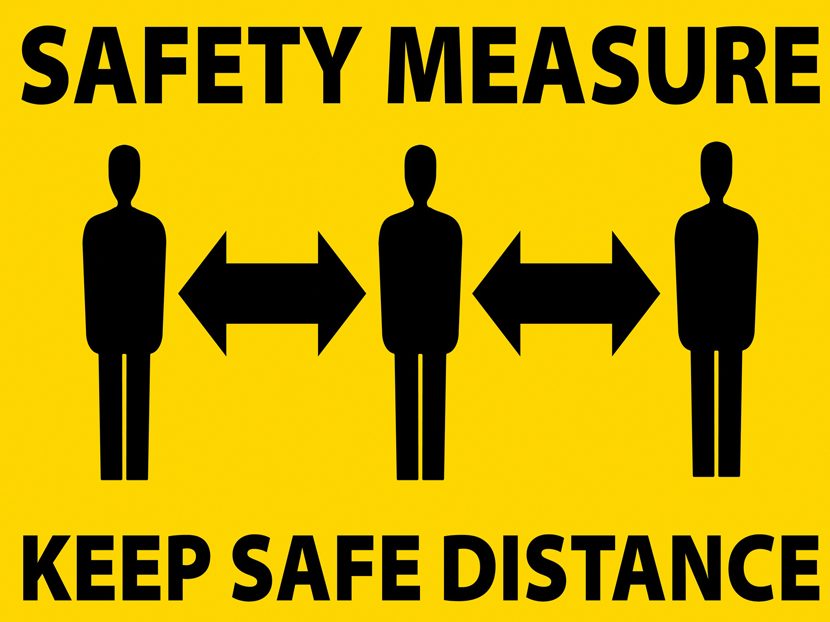Customer Service in the Age of Social Distancing
The rules have changed, and we must adapt at an unprecedented rate.

Strange times in the world today. I know, understatement of the year. Like many of you, I am still in awe of the last several weeks. I find myself reflecting on traditional business norms and how 2020 started off well for many of us. Then it hit. What started as a few waves hitting the shore morphed into breakers crashing along the coast. I am not sure when the tidal wave will truly hit or what it will look like for us, but fear of the unknown has never produced meaningful results.
Like many of you, I have been challenged in the way I serve my clients. With the coaching clients, the phone calls remain very similar. The event-based and destination clients are another story. We are trying to get creative with web-based programs, but the deliverable is not optimal. I miss the groups. I miss the faces in the audience. I miss the human interaction.
But most of all, this isolation messes with my ability to serve. For those in my profession, and I know I am not alone, this inability to serve can begin to challenge my self-worth and my contribution to society. This is the time to dig deep and push beyond the struggle.
As distributors, our fundamental purpose is to serve both up and down the supply chain. As business owners, we have a moral obligation to help our employees, but I will leave that drum to be beaten by the millions of faceless opinions on social media. The value proposition of the wholesale distributor is to make the supply chain function more efficiently and effectively. Our goal is to make it easier for goods to flow so that our end-user customers can accomplish meaningful work.
Just as my ability to serve has been disrupted, this pandemic has challenged the very purpose of our organizations. The wholesale distributor simply cannot function in the same manner it could a few weeks ago. The rules have changed, and we must adapt at an unprecedented rate. Fortunately, we are a resilient lot.
Last week, I had the opportunity to facilitate a call with a group of young operations managers in the plumbing supply business. With everything going on in the world, we decided to forgo our planned topic and take the temperature of the meeting participants. How have their companies been affected? What are the contractors doing? Are certain business segments deemed essential?
By the way, defining essential businesses has become a moving target. If it’s your business, doesn’t it feel pretty darn “essential?”
As we moved through the update, I was encouraged to hear several of the companies had been experiencing better than expected sales volume. I am not sure that it wasn’t due to panic buying, but hoarding toilets is a far cry from hoarding toilet paper. Contractors may have been concerned with not being able to perform routine maintenance or emergency repairs if the wholesaler shuts down. Too many assumptions lead to poor decision-making.
The real meat of the discussion moved to the logistics of order fulfillment. How do we best serve the needs of the essential business customer and still practice the physical distance recommended by health-care professionals?
In this vertical market, there is a heavy reliance on over-the-counter transactions by service technicians. From a safety standpoint, we can’t let people come into the showroom any longer. So how do we serve?
One creative company has been relying on technology solutions to help maintain these vital transactions. It is becoming heavily dependent on both its e-commerce solution and its highly trained staff. Early investments in both of these areas have really paid dividends in a time of crisis. Skilled inside salespeople, familiar with customer applications, are helping inject a glimmer of normalcy into a disrupted work environment.
To keep both sides safe, this company created messaging protocols with customers when they arrive at the store. When the customer arrives, he messages the distributor that he is ready for pickup. Once notified, the distributor opens the door, places the customer order outside the building. Once the material handlers are safely back in the building, the customer is free to pick up the order. It seems very impersonal, but that is our current reality. Hugs and high-fives will have to wait.
Jobsite Deliveries
Delivery, via company-owned vehicles, has long been the mainstay of construction-related distribution. How do we practice safe distancing habits while maintaining this staple of the service offering? It isn’t difficult if we are willing to start with basic protocols.
When I was a driver for my family contractor supply business, there were several opportunities to exercise my guns versus my gums. I would pull up to the site, ask the superintendent where to unload and proceed to get my sweat on. This still happens today. We just need to apply a little technology to move past the pieces where distancing is compromised.
Companies that have invested in fleet monitoring can notify a contractor when a delivery has reached the jobsite. For frequently visited sites, drivers and customers can designate drop-off zones. In the absence of fleet monitoring systems, delivery drivers can call customers when they arrive on-site and receive specific drop-off information. This requires more diligence on the side of the customer service representative to provide contact information, but it would hardly be a burden.
One of the bigger challenges may occur when an order has been shipped directly from the manufacturer to the jobsite customer. In this scenario, we are relying on a third party to follow a protocol that may not be what they are contracted to perform. Since this third party has little skin in the game, they may not wish to adhere to the distancing.
Furthermore, if a project is shut down either voluntarily or not, what happens to that order? In these uncertain times, it would be prudent to avoid drop-ship orders unless specific contingencies are outlined ahead of the shipment. While it may add some transactional cost, distributors may want to better control order fulfillment through their own delivery mechanisms.
As I said at the beginning of this column, we are in very strange times. There is no process manual or standard operating procedure for the challenges we are encountering today. However, this does not give us a pass or an opportunity to shirk our service responsibilities. Rather, it allows us to reach back to our creative roots, where we solved problems on the fly and performed as though our next meal depended on it.
Many of the solutions I am suggesting require trust between supply chain partners. Perhaps this is a good time to remind ourselves of common goals versus individual treasure. We will all get through this, regardless of the outcome. Stay vigilant to the true purpose of distribution and I look forward to meeting you on the other side.





